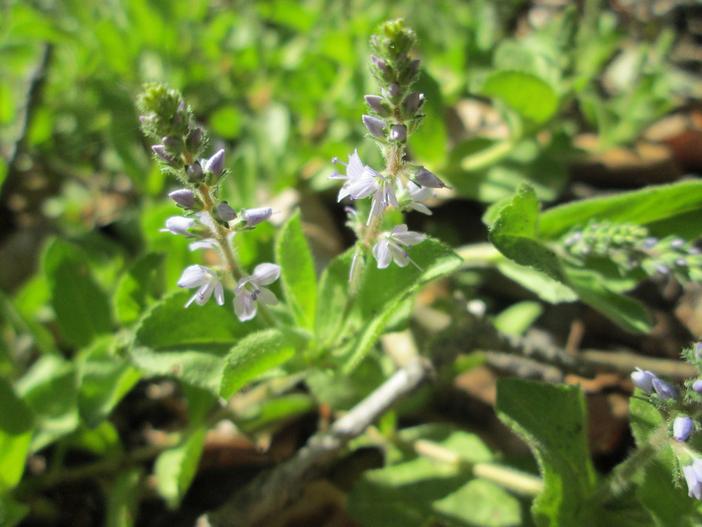Common Gypsyweed
(Veronica officinalis)
Common Gypsyweed (Veronica officinalis)
/
/

Andreas Rockstein
CC BY-SA 2.0









































































Estimated Native Range
Summary
Common Gypsyweed is valued for its ability to cover ground quickly, making it useful for erosion control and as a ground cover in garden settings. It is also appreciated for its medicinal properties, historically used in herbal medicine for various ailments. In cultivation, it adapts to a range of light conditions from full sun to part shade and is not particular about soil type, though it prefers well-drained soils. While it has low to medium water requirements, it can tolerate drought once established. Gardeners should be cautious, as Veronica officinalis can become invasive outside its native range, particularly in the United States, and should check local regulations before planting.CC BY-SA 4.0
Plant Description
- Plant Type: Herb
- Height: 0.5-1 feet
- Width: 0.5-1 feet
- Growth Rate: Moderate
- Flower Color: Blue, Purple
- Flowering Season: Spring, Summer
- Leaf Retention: Deciduous
Growth Requirements
- Sun: Full Sun, Part Shade
- Water: Low, Medium
- Drainage: Slow, Medium, Fast
Common Uses
Bee Garden, Bird Garden, Butterfly Garden, Deer Resistant, Drought Tolerant, Groundcover, Hummingbird Garden, Low Maintenance, Rabbit Resistant
Natural Habitat
Open woodlands, grasslands, and meadows across Europe and Western Asia
Other Names
Common Names: Common Speedwell, Paul’s Betony, Heath Speedwell, Herbal Speedwell, Upland Speedwell, Gypsyweed, Speedwell, Wald-Ehrenpreis, Véronique Officinale, Herbe Aux Ladres
Scientific Names: , Veronica officinalis, Veronica mas, Veronica spadana, Veronica officinalis var. officinalis, Veronica officinalis var. tournefortii, Veronica tournefortii, Veronica allionii, Veronica officinalis var. multicaulis, Veronica setigera
GBIF Accepted Name: Veronica officinalis L.